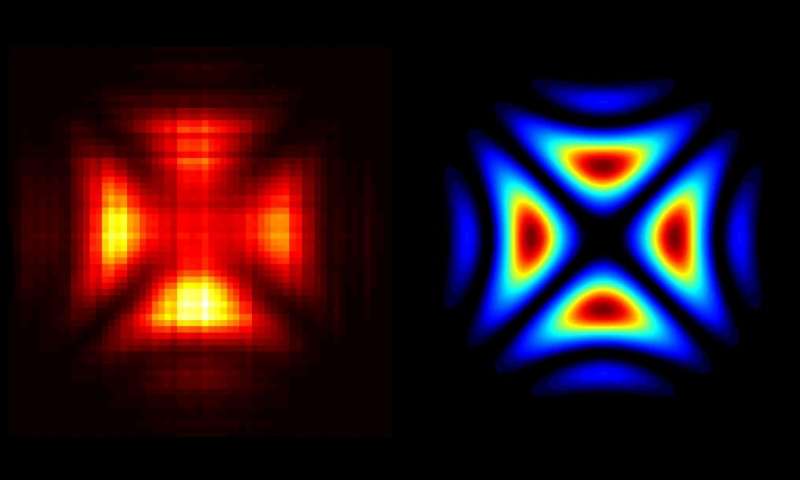http://phys.org/news/2016-07-birth-quantum-holographymaking-holograms-particles.html#nRlv
Until quite recently, creating a hologram of a single photon was believed to be impossible due to fundamental laws of physics. However, scientists at the Faculty of Physics, University of Warsaw, have successfully applied concepts of classical holography to the world of quantum phenomena. A new measurement technique has enabled them to register the first-ever hologram of a single light particle, thereby shedding new light on the foundations of quantum mechanics.
Scientists at the Faculty of Physics, University of Warsaw, have created the first ever hologram of a single light particle. The spectacular experiment was reported in the prestigious journal Nature Photonics.The successful registering of the hologram of a single photon heralds a new era of quantum holography, which offers a whole new perspective on quantum phenomena.
“We performed a relatively simple experiment to measure and view something incredibly difficult to observe: the shape of wavefronts of a single photon,” says Dr. Radoslaw Chrapkiewicz.
In standard photography, individual points of an image register light intensity only. In classical holography, the interference phenomenon also registers the phase of the light waves—it is the phase that carries information about the depth of the image. When a hologram is created, a well-described, undisturbed light wave—the reference wave—is superimposed on another wave of the same wavelength but reflected from a three-dimensional object. The peaks and troughs of the two waves are shifted to varying degrees at different points of the image. This results in interference and the phase differences between the two waves create a complex pattern of lines. Such a hologram is then illuminated with a beam of reference light to recreate the spatial structure of wavefronts of the light reflected from the object, and as such, its 3D shape.
One might think that a similar mechanism would be observed when the number of photons creating the two waves were reduced to a minimum—that is, to a single reference photon and a single photon reflected by the object. But that is not the case. The phase of individual photons continues to fluctuate, which makes classical interference with other photons impossible. Since the Warsaw physicists faced a seemingly impossible task, they attempted to tackle the issue differently: Rather than using classical interference of electromagnetic waves, they tried to register quantum interference in which the wave functions of photons interact.
Hologram of a single photon: reconstructed from raw measurements (left) and theoretically predicted (right). Credit: FUW
Wave function is a fundamental concept in quantum mechanics and the core of its most important principles, the Schrödinger equation. In the hands of a skilled physicist, the function could be compared to putty in the hands of a sculptor. When expertly shaped, it can be used to ‘mould’ a model of a quantum particle system. Physicists are always trying to learn about the wave function of a particle in a given system, since the square of its modulus represents the distribution of the probability of finding the particle in a particular state, which is highly useful.








